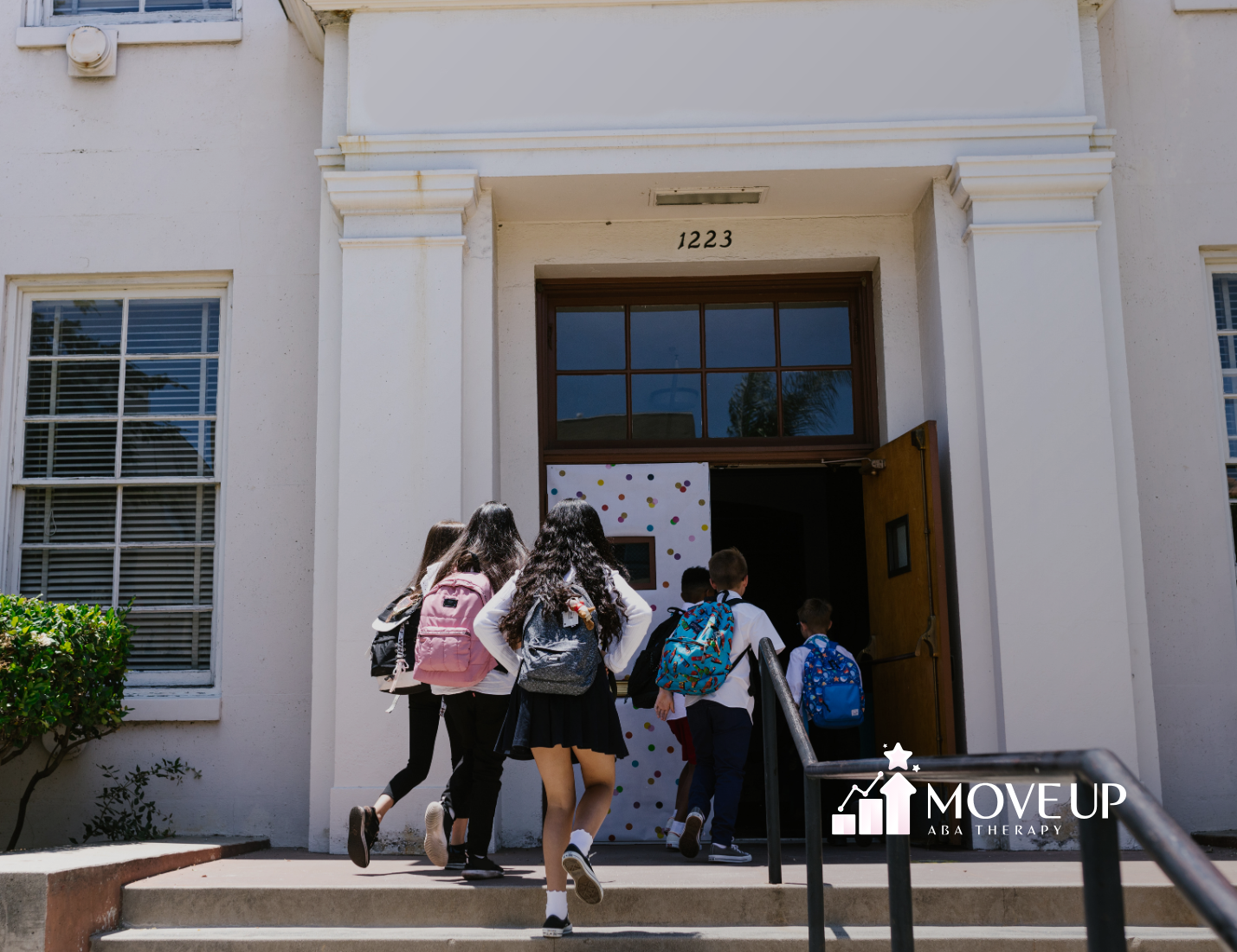Understanding Autism Learning Styles
Benefits of Inclusive Education
Inclusive education, where students with autism learn alongside their non-autistic peers, offers significant benefits for all students involved. This approach fosters social skills, understanding, and acceptance among students while providing a supportive learning environment.
| Benefit | Description |
|---|---|
| Social Skills | Students with autism develop better social interactions. |
| Understanding | Non-autistic peers gain a better understanding of autism. |
| Acceptance | Promotes a culture of acceptance and diversity. |
Inclusive education also helps in reducing the rates of “school distress” among children with autism spectrum disorders (ASD), which indicates significant emotional distress related to attending school. By creating an environment where all students feel valued and supported, inclusive education can significantly enhance the learning experience for students with autism.
Tailoring Instruction for Autism
Tailoring instruction is critical for teaching students with autism in the inclusive classroom. This approach addresses various learning styles and ensures all students can engage with the material effectively.
Teaching to the learning style of the student, such as visual, auditory, or kinesthetic, can impact the child’s ability to attend to and process information presented. Adapting teaching styles to match the strengths of the student, especially for autistic children, can enhance their chances for success in school and positively influence their behavior.
| Learning Style | Description | Example |
|---|---|---|
| Visual | Learns best through seeing | Use of diagrams and charts |
| Auditory | Learns best through hearing | Use of verbal instructions |
| Kinesthetic | Learns best through doing | Hands-on activities |
Understanding and utilizing the unique special interests and strengths of individuals with autism can greatly contribute to their educational success. For more information on specific strategies, visit our articles on visual learning strategies for autism, auditory learning techniques for autism, and kinesthetic learning activities for autism.
By recognizing and addressing the diverse learning styles of students with autism, educators can create a more inclusive and effective learning environment that supports the unique needs of every student.
Supporting Autism Learning
Positive Reinforcement Strategies
Positive reinforcement is a powerful tool in supporting the learning of individuals with autism. By using reward systems, such as token economies, educators can motivate students and reinforce desired behaviors. Applied Behavior Analysis (ABA) is an evidence-based methodology that employs positive reinforcement to encourage desired behaviors and skills in children with Autism Spectrum Conditions.
| Strategy | Description |
|---|---|
| Token Economies | Students earn tokens for positive behaviors, which can be exchanged for rewards. |
| Praise and Encouragement | Verbal affirmations to reinforce positive actions. |
| Tangible Rewards | Small prizes or treats given for achieving specific goals. |
Sensory-Friendly Environments
Creating sensory-friendly environments is crucial for students with autism, as they often experience sensory sensitivities. Providing sensory-friendly spaces and tools can help manage sensory overload and maintain focus in the classroom. Tools such as noise-canceling headphones, fidget toys, and weighted blankets are beneficial. For more information on creating autism-friendly learning environments, visit our article on autism-friendly learning environments.
| Tool | Purpose |
|---|---|
| Noise-Canceling Headphones | Reduce auditory distractions. |
| Fidget Toys | Provide tactile stimulation to help maintain focus. |
| Weighted Blankets | Offer deep pressure input to promote calmness. |
Fostering Positive Peer Relationships
Encouraging positive peer relationships is essential for the social development of students with autism. Group activities and buddy systems can foster a supportive and inclusive classroom environment, promoting social interactions and self-advocacy.
| Activity | Benefit |
|---|---|
| Group Projects | Encourage collaboration and communication. |
| Buddy Systems | Pair students to support each other academically and socially. |
| Social Skills Groups | Teach and practice social interactions in a structured setting. |
By implementing these strategies, educators can create a supportive learning environment tailored to the unique needs of students with autism.
Sensory Processing in Autism
Understanding sensory processing in autism is crucial for tailoring education to meet the unique needs of individuals with Autism Spectrum Disorder (ASD). Sensory processing differences can significantly impact learning and daily functioning.
Sensory Sensitivities in Autism
Individuals with autism often experience sensory processing differences (SPDs), which can manifest as hypersensitivity (over-reactivity) or hyposensitivity (under-reactivity) to sensory input. They may also experience fragmented or distorted perceptions, making it challenging to filter out irrelevant sensory information and integrate sensory input from different sources.
| Sensory Sensitivity | Description |
|---|---|
| Hypersensitivity | Over-reactive to sensory stimuli (e.g., loud noises, bright lights) |
| Hyposensitivity | Under-reactive to sensory stimuli (e.g., not noticing pain or temperature changes) |
| Fragmented Perceptions | Difficulty integrating sensory information from multiple sources |
Altered Neural Connectivity
Altered neural connectivity is one of the underlying mechanisms contributing to sensory processing differences in individuals with ASD. Sensory gating dysfunction and atypical sensory modulation are also significant factors. Sensory gating dysfunction can lead to sensory overload, with N100 gating deficiency present in adolescents and young adults with ASD, impacting sensory sensitivity and social deficits.
Atypical sensory modulation (ASM) can result in individuals reacting too much or too little to sensory information, which can affect their everyday functional abilities and lead to anxiety.
Sensory-Based Interventions
Sensory-based interventions have shown promise in improving sensory functioning and reducing associated behavioral issues in individuals with ASD. Sensory Integration Therapy (SIT) and environmental modifications, such as creating sensory-friendly environments, are commonly used approaches.
| Intervention | Description |
|---|---|
| Sensory Integration Therapy (SIT) | A therapeutic approach that aims to help individuals process and respond to sensory information more effectively |
| Environmental Modifications | Adjustments to the environment to reduce sensory overload (e.g., dimming lights, reducing noise) |
By understanding and addressing sensory processing differences, educators and caregivers can create supportive learning environments that cater to the unique needs of individuals with autism.
Challenges in Autism Learning
Individuals with autism often face unique challenges in their learning journey. Understanding these challenges is crucial for tailoring educational approaches to meet their needs effectively.
Verbal Communication Difficulties
Verbal communication difficulties are commonly associated with autism. Individuals often struggle with expressive language skills and find it challenging to articulate their thoughts and ideas. They may have superior lexical processing of individual words but struggle with grammar and context-dependent language use. Providing patience and support is crucial to allow individuals with autism to express themselves at their own pace.
| Communication Challenge | Description |
|---|---|
| Expressive Language | Difficulty in articulating thoughts and ideas |
| Grammar and Context | Struggles with grammar and context-dependent language use |
Rigidity in Thinking
Rigidity in thinking is a common trait observed in individuals with autism. This rigidity leads to difficulties in shifting focus, thoughts, or behaviors from one task or topic to another. Such inflexibility can hinder their ability to adapt to new situations or changes in learning environments. This can be particularly challenging in dynamic classroom settings where flexibility is often required.
| Rigidity Challenge | Description |
|---|---|
| Task Shifting | Difficulty in moving from one task to another |
| Adaptability | Struggles with adapting to new situations or changes |
Executive Functioning Challenges
Individuals with autism often face challenges related to executive functioning, impacting their ability to learn and navigate various tasks effectively. Executive functioning involves planning, organizing, and managing time. Difficulties in these areas can hinder educational success. These challenges can make it difficult for individuals to complete assignments, follow multi-step instructions, and manage their time efficiently.
| Executive Functioning Challenge | Description |
|---|---|
| Planning | Difficulty in organizing and planning tasks |
| Time Management | Struggles with managing time effectively |
Understanding these challenges is essential for creating autism-friendly learning environments and implementing effective strategies. By recognizing and addressing these difficulties, educators and caregivers can better support the unique learning styles of individuals with autism.
Leveraging Strengths in Autism Learning
Understanding and leveraging the strengths of autistic individuals can significantly enhance their educational experiences. By focusing on their unique special interests and preferred learning styles, educators and families can create more effective and engaging learning environments.
Unique Special Interests
Autistic individuals often have unique special interests that can be harnessed to enhance their learning experiences. These interests can serve as powerful motivators and can be integrated into various educational activities. For example, if a child has a keen interest in trains, incorporating train-related themes into math problems or reading materials can make learning more engaging and enjoyable.
| Special Interest | Potential Educational Integration |
|---|---|
| Trains | Math problems, reading materials, science projects |
| Animals | Biology lessons, reading comprehension, art projects |
| Space | Astronomy, physics, creative writing |
Visual Learning Styles
Many autistic children are highly visual learners and need to see new information to best retain it. Visual learning involves using images, diagrams, and other visual aids to help understand and remember information. Autistic individuals may use fewer learning styles than their non-autistic peers, making it important to understand each child’s learning style to help them be successful in school and beyond.
Visual learners often benefit from:
- Picture schedules
- Visual aids like charts and diagrams
- Written instructions
- Videos and demonstrations
Auditory and Kinesthetic Learning Styles
While visual learning is common, some autistic individuals may also excel with auditory or kinesthetic learning styles. Auditory learners benefit from listening to information, such as through lectures, discussions, and audio recordings. Kinesthetic learners, on the other hand, learn best through hands-on activities and physical movement.
| Learning Style | Effective Strategies |
|---|---|
| Auditory | Listening to lectures, using audio books, engaging in discussions |
| Kinesthetic | Hands-on activities, role-playing, using manipulatives |
Understanding and utilizing these learning styles can help tailor educational approaches to meet the unique needs of autistic individuals.
By recognizing and leveraging the strengths and preferred learning styles of autistic individuals, educators and families can create more inclusive and effective learning environments. This approach not only enhances educational outcomes but also fosters a positive and supportive atmosphere for autistic learners.
Impact of Learning Styles
School Distress in Autism
Rates of “school distress” are significantly elevated in children with autism spectrum disorders (ASD), indicating significant emotional distress related to attending school. This highlights the importance of understanding and addressing the unique learning styles and needs of autistic individuals in educational settings. School distress can manifest as anxiety, avoidance behaviors, and difficulty in social interactions, making it crucial for educators and families to create supportive and accommodating learning environments.
Teaching to Individual Styles
Teaching to the learning style of the student, such as visual, auditory, or kinesthetic, can impact the child’s ability to attend to and process information presented. Adapting teaching styles to match the strengths of the student, especially for autistic children, can enhance their chances for success in school and positively influence their behavior.
| Learning Style | Characteristics | Teaching Strategies |
|---|---|---|
| Visual | Enjoys looking at books, watching television, and observing people and objects | Use visual aids, diagrams, and written instructions |
| Auditory | Responds well to spoken instructions and discussions | Incorporate verbal instructions, discussions, and auditory materials |
| Kinesthetic | Prefers hands-on activities and movement | Use physical activities, experiments, and tactile learning tools |
Sensory Processing Differences
Understanding sensory processing differences in individuals with autism is crucial for providing appropriate support and interventions. Autistic individuals may have heightened or diminished sensitivity to sensory stimuli, which can affect their learning and behavior. For example, a study investigating responses to pain in individuals with autism spectrum disorders (ASD) offers insights into how adults with ASD perceive painful stimuli.
| Sensory Sensitivity | Description | Support Strategies |
|---|---|---|
| Hypersensitivity | Overreaction to sensory stimuli (e.g., loud noises, bright lights) | Create a sensory-friendly environment, use noise-canceling headphones, provide breaks |
| Hyposensitivity | Underreaction to sensory stimuli (e.g., not noticing pain, seeking intense sensory input) | Incorporate sensory activities, use weighted blankets, and provide sensory breaks |
By recognizing and accommodating these sensory processing differences, educators and families can create a more inclusive and supportive learning environment for autistic individuals. Understanding and leveraging the strengths of each learning style can significantly improve the educational experience and overall well-being of students with autism.
Final Thoughts
In conclusion, understanding the diverse learning styles and sensory needs of students with autism is key to fostering a truly inclusive and effective educational environment. By tailoring instruction, creating sensory-friendly spaces, and using positive reinforcement, educators and caregivers can empower autistic learners to thrive academically and socially. Leveraging each child’s unique strengths and interests opens doors to more meaningful and enjoyable learning experiences.
If you’re looking for expert guidance and personalized ABA support for your child, Move Up ABA is here to help. Contact us today to learn how our team can support your child’s growth and success.
Sources:
- https://autism.org/learning-styles-autism/
- https://www.autism-help.org/behavior-positive-reinforcement-autism.htm
- https://www.autismspeaks.org/sensory-issues
- https://pmc.ncbi.nlm.nih.gov/articles/PMC10687592/
- https://pmc.ncbi.nlm.nih.gov/articles/PMC3155869/







